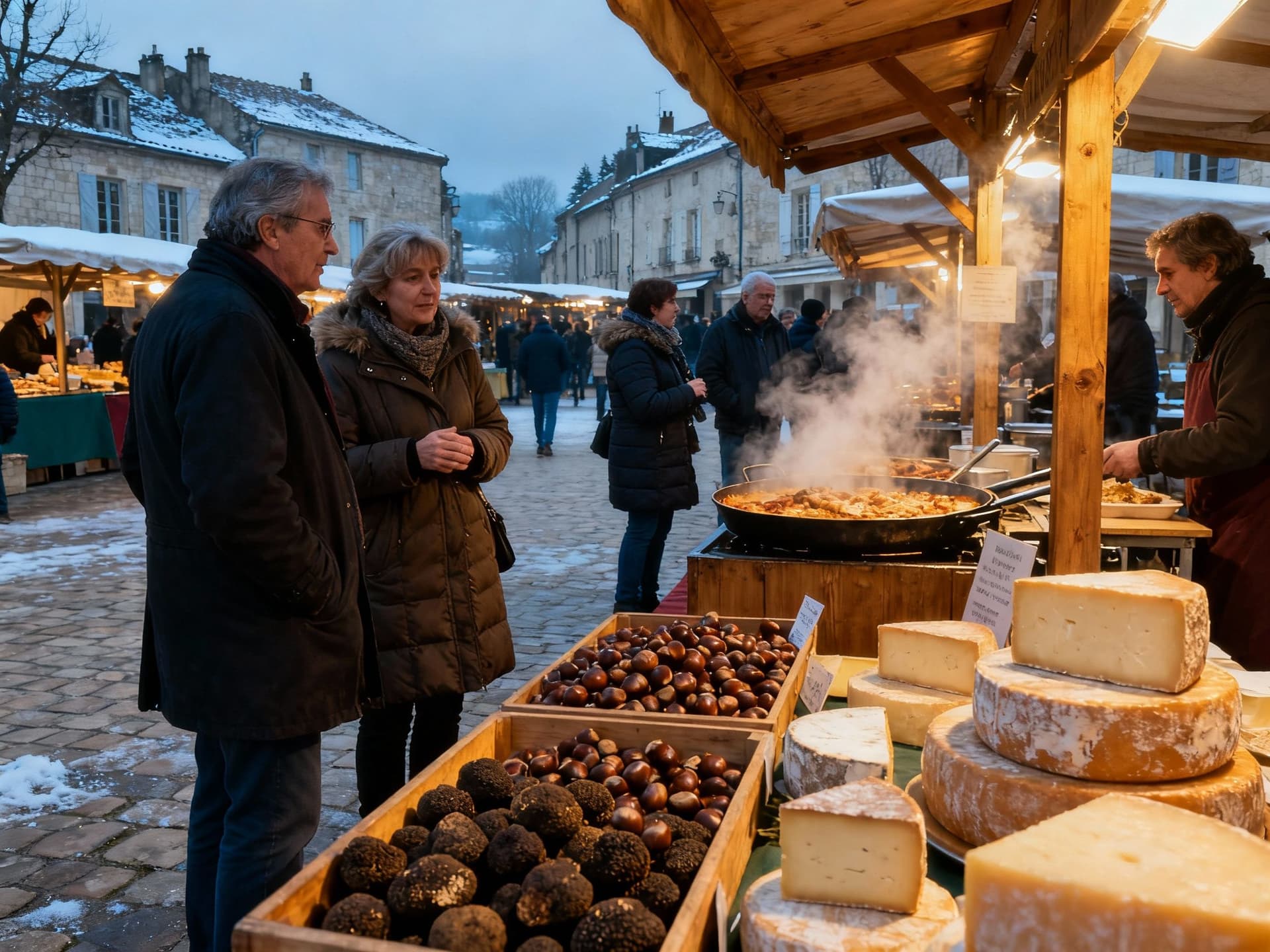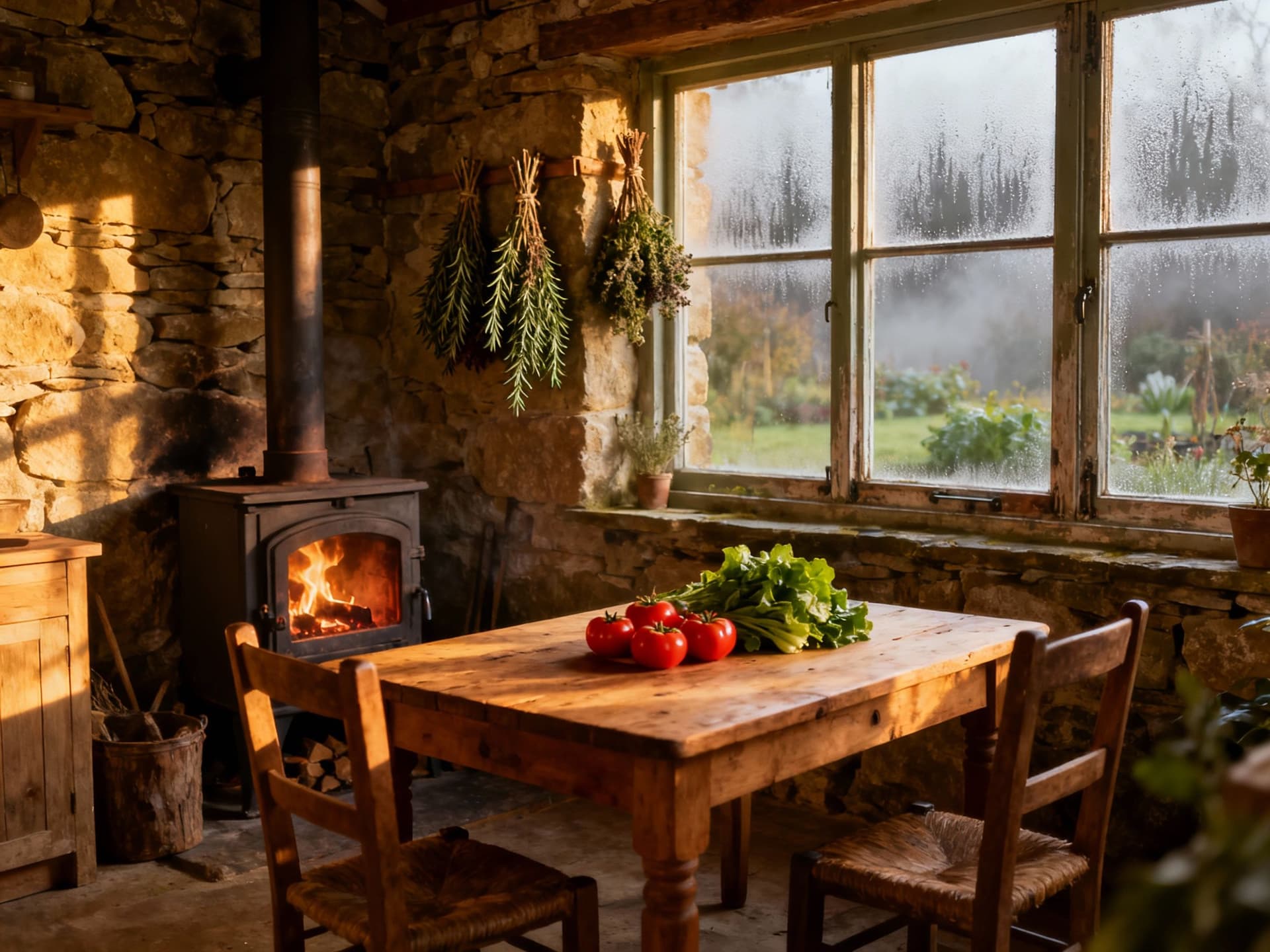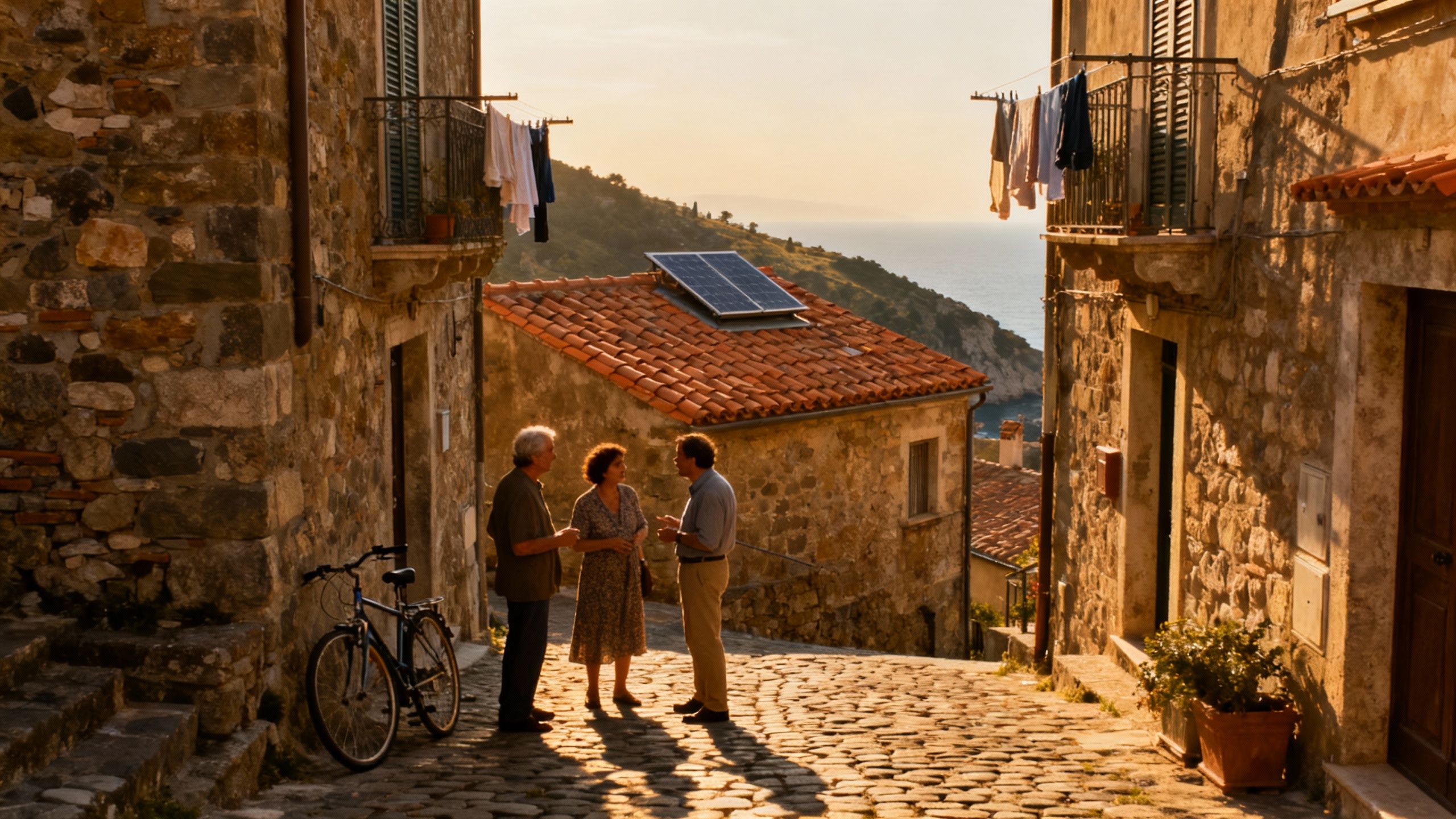Winter Truffle Season: France’s Unexpected Moment to Buy
Why visiting France in winter—truffle season, quiet markets and clearer building flaws—can be the smartest moment to buy. Data and local rituals back the case.
Imagine a damp January morning in Sarlat: steam rising from a bowl of mushroom soup, traders setting out burlap sacks of black truffles, and limestone houses warming slowly in a soft, pearly light. For many international buyers the image of France is sunlit terraces on the Riviera, but there is another seasonal truth — winter’s rituals, small markets and quieter villages reveal the country’s living fabric. That quieter calendar can also shape smarter buying: lower competition, clearer renovation seasons and the chance to see a property in the weather you’ll spend much of the year in. According to recent market analysis, French property prices began to stabilise and inch upward in early 2025, making timing and local knowledge important for long-term, eco-minded buyers.
Living French Seasons: Why Winter Reveals the Real Place

France is not a single mood but a rhythmic sequence of weekends, markets and rituals. In winter you hear the neighborhood differently: shutters closed against damp, boulangeries opening with the first light, and village halls hosting communal meals. For buyers who love green living, winter exposes a property’s insulation, damp risks, heating systems and the quality of local wood fuel or heat pumps in a way a July visit cannot. Living here means pacing life by seasonal markets—mornings at Marché Forville in Cannes for citrus and fish, or Saturday mornings in Sarlat for truffles and chestnuts; these rituals shape where you actually want to live.
Neighborhood Spotlight: Dordogne's Sarlat and the Périgord Rhythm
Sarlat and the surrounding Périgord villages feel like a lived painting in winter: pale stone, smoking chimneys and markets centered on terroir. Locals gather at Place de la Liberté for truffle tastings in January, and chefs from Bergerac travel in to buy the best specimens. If you imagine yourself cooking by a stone hearth, tending a small orchard, or converting an old barn into a passive‑solar studio, these villages reward patience and craftsmanship. However, the sparse winter timetable also means fewer services on certain weekdays, so consider proximity to a regional hospital, a functioning mairie and year‑round markets when choosing a community.
Food, Markets and Social Life: How Cuisine Maps to Community
Food is the social currency in France — and it’s also a practical signal of a place’s durability. Market frequency, presence of local producers and seasonal festivals show community resilience: a weekly marché with butchers and bakers means you won’t be isolated in winter. Regions such as Dordogne, Provence and parts of Nouvelle‑Aquitaine have strong market cultures that persist year‑round. For buyers thinking ecologically, proximity to producers reduces food miles and supports smallholders; for property values, lively markets correlate with steadier demand and local stewardship.
Lifestyle highlights to seek in winter-focused French towns: Sarlat Saturday market for truffles and foie gras; a village bakery with daily bread; a communal wood yard or local biomass coop; a year‑round marché couvert or covered market hall; accessible regional train station (TER) for day trips.
Making the Move: Practical Steps that Match the Season

There’s a sweet spot between dreaming and doing: winter house‑hunting in France often means fewer competing buyers and clearer evidence of a property’s performance in cold months. National data show prices stabilising and modest growth in early 2025, which means timing can influence negotiation power. But winter also reveals drainage, roof integrity, thermal comfort and local service rhythms; these are the tangible details that protect value and quality of life. Work with advisors who know how thermal performance, wood‑burning regulations and year‑round access affect both living comfort and long‑term stewardship.
Property Styles: Stone Farmhouses, Townhouses and Low‑Energy Conversions
Traditional stone farmhouses in Dordogne or Provence offer thick thermal mass and character, but they often need targeted upgrades: insulation behind lime plaster, double‑glazed heritage windows, and sympathetic roof insulation. Townhouses in small épicerie-lined centres save on commute and community costs but may lack private garden space. Newer low‑energy renovations or certified renovations with heat pumps can reduce winter bills and meet France’s evolving rental regulations. Match property type to the life you want — a spacious barn for a craft practice, or a compact village home for market‑centric living.
Working with Local Experts Who Understand Seasonality
Choose agents and craftsmen who live through the same winters as you do. They’ll advise on insulation strategies, local heating fuels, and how municipal services respond to frost. Look for notaires and agencies who can produce energy diagnostics (DPE) and explain the 2025 rental ban on energy class G properties, since regulatory pressure affects renovation timelines. Finally, hire a local architect familiar with traditional materials (lime, chestnut timber) to translate heritage appeal into year‑round comfort.
Steps to buy with a winter-minded lifestyle in France: 1. Visit in the cold season to test heating, drafts and access. 2. Request historical bills and a recent DPE (energy performance diagnostic). 3. Commission a winter‑season structural and moisture inspection. 4. Discuss local fuel sources and maintenance (wood suppliers, pellet delivery). 5. Negotiate timelines that allow for spring renovations when trades return.
Insider Knowledge: What Expats Wish They’d Known
Expat buyers often say the surprising part of moving to France is how much social life is tied to small, regular rituals: the Thursday market that makes a village feel alive, the mairie hours that govern paperwork, and the local associations that run winter dances. Language matters but gestures matter more: helping with a communal wood delivery or volunteering at a fête quickly folds you into local life. Many also regret not budgeting for slow, seasonal renovations that cannot be completed during deep winter; tradespeople in rural regions often work to a spring schedule.
Cultural Integration: Small Courtesies That Open Doors
Simple local customs—saying bonjour to the baker every morning, attending the municipal meeting, or bringing galette des rois to a new neighbour—turn a house into a home. For buyers, that means buying into a community, not just a property; choose places where you can contribute your skills, whether it’s organic gardening, restoration carpentry or hosting a seasonal supper. Those ties also become a practical safety net in winter: neighbours share wood, drive each other to markets, and watch over vacant homes.
Long-Term Lifestyle & Stewardship: Growing with Place
Thinking decades ahead changes choices: invest in rainwater capture, native hedges, and passive solar orientation rather than cosmetic pool features that sit idle in winter. Data show the French market rebalancing in 2025, but long-term value is increasingly tied to energy performance and local services. An eco-conscious purchase in a village with an active market, reliable public transport and engaged local government will likely age better than a standalone trophy property that requires constant external inputs.
Red flags to watch during a winter visit: persistent damp in cellars or attics; slow or non-existent road clearing after frost; lack of nearby producers or shops open in low season; an old heating system without recent maintenance records; and no recent DPE or refusal to share energy bills.
If you’re tempted by a truffle‑market weekend and a stone cottage, remember that love needs a plan. Start with a winter visit, gather energy diagnostics, commission a winter inspection and build relationships with a local notaire, architect and an agent who values stewardship. Live the seasons before you buy: spend a month in the community if you can, volunteer at the market, cook with local producers and test whether the rhythms match your life. When the place feels right even in a grey January, you’ve found more than a house—you’ve found a home that will age well and support the landscape around it.
Dutch property strategist who helped 200+ families find sustainable homes in southern Europe; expert in legal pathways and long-term stewardship.


